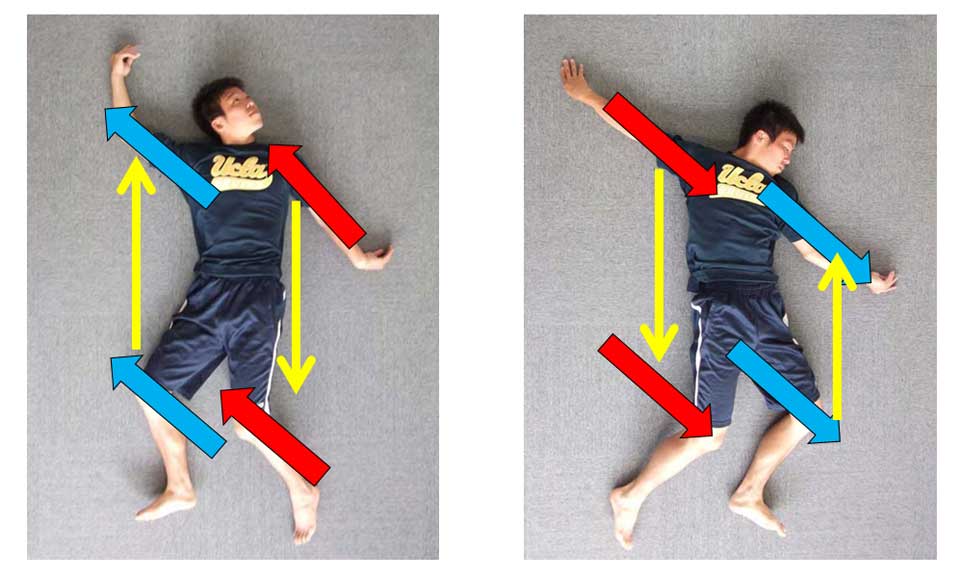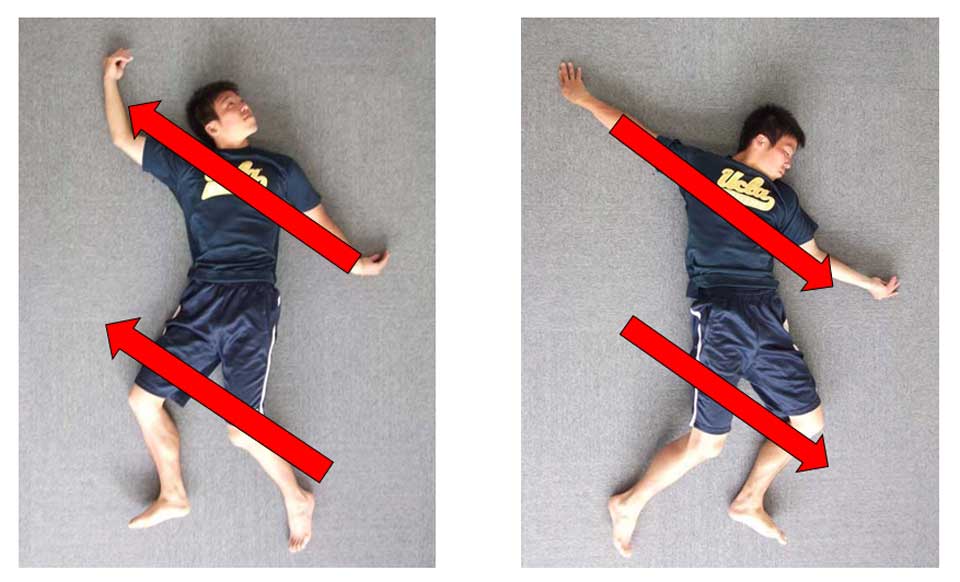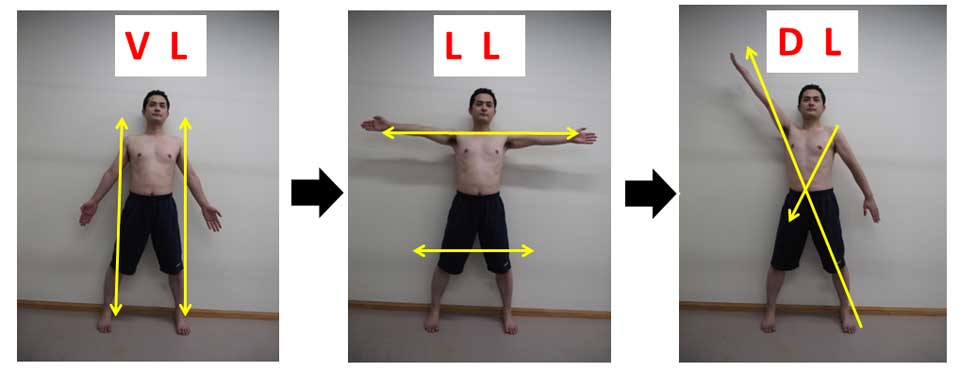For Dynamic ROTO Therapy`s practical use, the human form is basically seen as a three dimensional cylindrical structure where treatment involves correcting imbalances in the rotational kinetic chain. To help us to easily diagnose any imbalances practitioners refer to three kinetic chain functional lines.
- The Vertical functional line
- The Lateral functional line
- The Diagonal functional line
If the body`s kinetic chain system is impaired along any one of these three functional lines it results in a breakdown of the body`s rotational capabilities. As this can result in other subsequent problems, treatment aims to correct these three functional lines.
1.VL (Vertical Functional Line)
Here (as in dia.4) the upper and lower limbs pair up to rotate ( to make laterally rotated pairs and medially rotated pairs) together. In cases where the range of motion of the kinetic chain is severely impaired we often see discrepancies here in the VL.

2. LL (Lateral Functional Line)
Here (as in dia.5) we inspect the kinetic chain for the arms to make one pair and the legs as another. Where one side may be rotated medially, the other side (of either the upper or lower limbs) is rotated laterally (and visa versa).
By performing acupuncture to say, either the upper or lower medially rotated limb we can expect a therapeutic effect to the opposing (in this case) laterally rotated side.
The Lateral Function Line is used in cases where the range of motion of the kinetic chain is only moderately impaired.

3.DL (Diagonal Functional Line)
Here (as in dia.6) the upper limb on one side and the lower limb on the opposite side is the kinetic chain where, for example, the upper limb may be medially rotated and the lower limb rotated laterally. The other lower limb is rotated medially and it`s upper pair is rotated laterally. This is the Diagonal Function Line.
By administering acupuncture to, let`s say, the medially rotated lower limb we can expect an effect in it`s upper (laterally rotated) pair. Equally, if we perform acupuncture on the medially rotated upper limb we can get an effect on the laterally rotated lower limb pair.
The Diagonal Function Line is used for just mild impairment of the kinetic chain.

By correcting the three kinetic chain functional lines (as in dia.7) we can get a total body therapeutic effect.

In Dynamic ROTO Therapy, in some cases, only press needles are needed. These are very small in length and thickness. On other occasions though, we include kinesiology with the press needling. The method of kinesiology actually used depends on the severity of the impairment to the rotational chain and for this the three kinetic chain functional lines are an important barometer.
One further important characteristic of DRT is that the posture of the patient can be altered at key phases of the treatment. In practical terms this means that if the impairment is very notable and the ROM for the kinetic chain is very limited (as in dia.8) the patient`s arms and legs may initially be placed in the downward sloping VL position and then targeted for treatment. As the patient`s condition improves and ROM increases then the lateral rotation of the arms and legs can be gradually increased, say, from the 90°(horizontal) LL position and then to the 140°DL position. In other words, as a patient`s condition may change over time, we have to alter what we choose as the most appropriate functional line for use. Throughout the course of treatments many different finely adjusted postures with press needling are used. This is a key characteristic of DRT.


